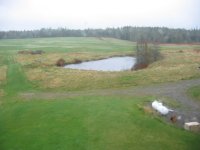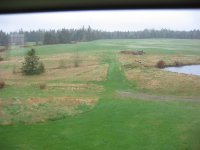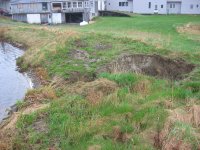tractordk
New member
- Joined
- Aug 26, 2005
- Messages
- 16
- Location
- south eastern maine
- Tractor
- nothin yet, JD x585se for mowing, etc
Hi everyone,
I just returned to Maine for the summer after a nice long winter away to find a few new projects have turned up in the yard. Looks like the first will have to be the culvert for the back pond. Here are the details:
It is a small pond in one of the back fields with a very old culvert made from welded barrels. Somewhere along the run the culvert has collapsed and is causing the dirt to erode. Looks like a simple project.
My plan is to dig up the old culvert and replace it with a new black plastic 12" or 15" culvert and standpipe. The culvert run is about 150'. I have never set a culvert before and wanted to know if there is anything in particular I should keep in mind. Our soil is primarily hard clay.
Additional questions:
any thoughts on 12" or 15" culvert size? looks like about $1200 worth of 15"
is there a less expensive alternitive to the black culvert pipe?
should i set the culvert directly in the clay or something else?
I have attached a few pictures so you all can get a look at the problem / project.
Thank you very much in advance for any ideas and advice.
Stay tuned for additional projects.
I just returned to Maine for the summer after a nice long winter away to find a few new projects have turned up in the yard. Looks like the first will have to be the culvert for the back pond. Here are the details:
It is a small pond in one of the back fields with a very old culvert made from welded barrels. Somewhere along the run the culvert has collapsed and is causing the dirt to erode. Looks like a simple project.
My plan is to dig up the old culvert and replace it with a new black plastic 12" or 15" culvert and standpipe. The culvert run is about 150'. I have never set a culvert before and wanted to know if there is anything in particular I should keep in mind. Our soil is primarily hard clay.
Additional questions:
any thoughts on 12" or 15" culvert size? looks like about $1200 worth of 15"
is there a less expensive alternitive to the black culvert pipe?
should i set the culvert directly in the clay or something else?
I have attached a few pictures so you all can get a look at the problem / project.
Thank you very much in advance for any ideas and advice.
Stay tuned for additional projects.




